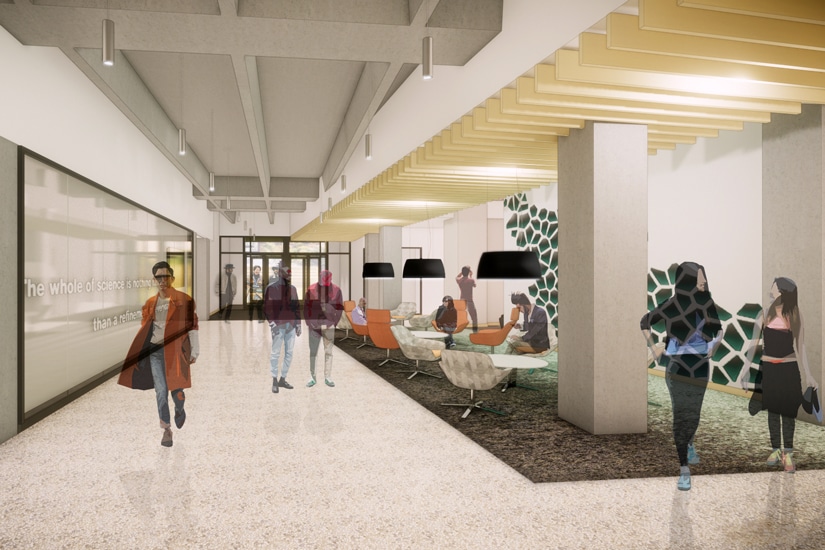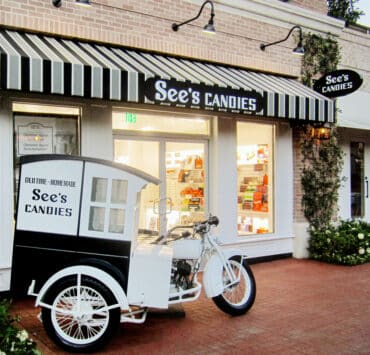|
Getting your Trinity Audio player ready...
|
When Kelly Knable asked her peers about their internships, she heard stories of endless paperwork, replacing toner cartridges, and the fine art of making coffee. She remembers friends complaining about meaningless work, difficult bosses, and wasted summers. Knable couldn’t relate. She was busy walking jobsites with nurturing superintendents, exclusively managing an addition to an elementary school, and learning all aspects of the construction business from top-level industry professionals.

In some ways, the experience was totally unexpected. Knable was a mechanical engineering student, after all. “I didn’t know anything about construction but was willing to try something new and explore my options,” she explains. Knable fell in love with the work and found a home at the company. She returned for three summers and had a full-time job before her senior year at Michigan State.
The experience set the tone for Knable’s entire career. “I’ve always raised my hand and volunteered to learn on the job and get hands-on experience doing new things with new people,” she says. Knable started as a project engineer and spent several years as a project manager, superintendent, and engineer on hospital, defense, and higher education projects in major cities across the nation.
She then managed a complex, multiphase hospital project in Florida before coleading a $450 million program at the Daytona International Speedway. At later stops in her career, Knable coordinated important renovations to home and spring training venues for sports clients like the Tampa Bay Buccaneers, the Toronto Blue Jays, and the University of South Florida.

All of these experiences anchor Knable in her current role as director of construction facilities planning and management at Indiana’s Ball State University (BSU), where she oversees everything related to construction. “My varied background helps in an academic setting that requires such a wide variety of work,” she says. “I love creating refreshing environments and seeing positive reactions. A campus is the perfect place for that.”
That campus traces its origins to 1899 when it opened as a training institute. The Ball brothers (of the famous Ball canning jars) bought the land to start a small college in 1918. Today, the midwestern public research university with just over 20,000 students is building on a long legacy of innovation that directs and informs all that Knable does.
In 2012, Ball State started what has grown into the nation’s largest ground-source, closed-loop geothermal energy system. The project heats and cools nearly 50 buildings and provides annual savings of $2 million. The current campus master plan requires all new construction projects to meet LEED sustainability requirements.

Many parts of Ball State’s campus have received updates in recent years. A new 500-bed residence hall (which Knable says is more like a trendy hotel) opened in 2020 with another one scheduled for completion by fall semester of 2021. Each hall features group study zones, electric fireplaces, music practice rooms, and other modern amenities.
In 2019, Knable helped complete a $62.5 million Health Professions Building that spans 165,000 square feet. The important project unites 11 departments under one roof and features clinical spaces and simulation labs. An expansive glass facade pulls in ample natural light while a green roof and photovoltaic arrays highlight BSU’s commitment to the environment. The Health Professions Building connects to the university’s existing geothermal system.
Knable says these projects are possible thanks to strong vision from campus leadership together with her dedicated and competent team. She’s also trying to bring more resources and greater transparency to her department. “I want people to enjoy their job like I have always enjoyed mine, and part of that is making sure they have the tools they need to succeed.”

Currently, Knable is deploying a software solution and getting digital devices into the hands of facilities employees. Soon, they’ll be able to enter any campus building and immediately access real-time information regarding mechanical units, preventative maintenance, and other key details.
Now, the construction and facilities teams at BSU are focused on a Foundational Sciences Building designed to enhance collaboration through shared research spaces and state-of-the-art labs. They’re also working to gut and renovate Cooper Science—one of the oldest academic buildings on campus.
Ball State’s noteworthy graduates include Late Show host David Letterman, Garfield creator Jim Davis, United Way CEO Brian Gallagher, and actor Doug Jones (The Shape of Water). Many of its programs, including master’s in nursing, special education, and business administration, are nationally ranked. Knable is motivated to help the university continue this legacy—she has taken advantage of this herself and will earn her MBA from Ball State at the end of the year. “Our MBA program was ranked 17th in US News & World Report,” says Knable, who also notes that earning the degree has been a lifelong career goal.
A modern campus grows the state’s economic base and helps BSU attract students, faculty, and researchers. “We want the best and the brightest in the nation to come here,” Knable says. “We want to attract people to Muncie, Indiana. And it all starts with great spaces.”


